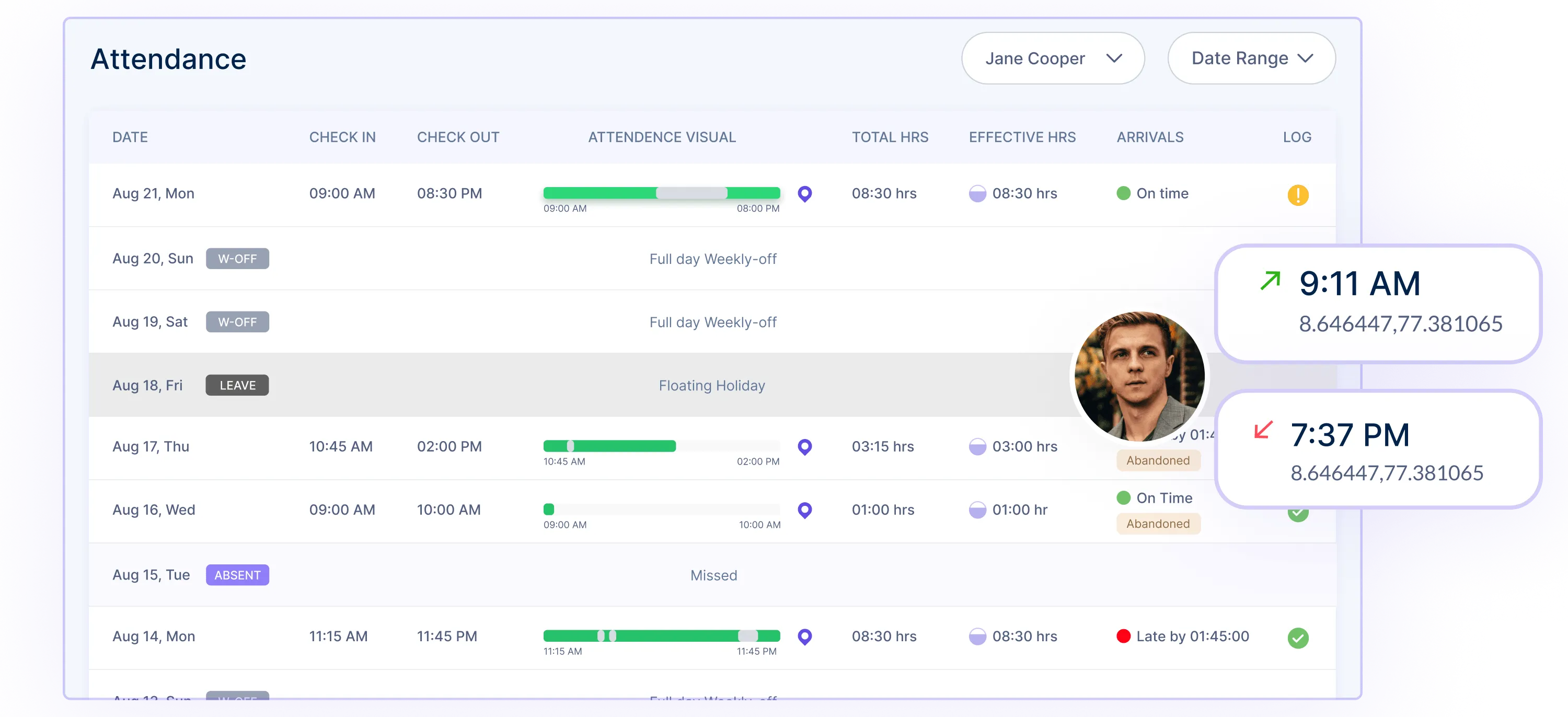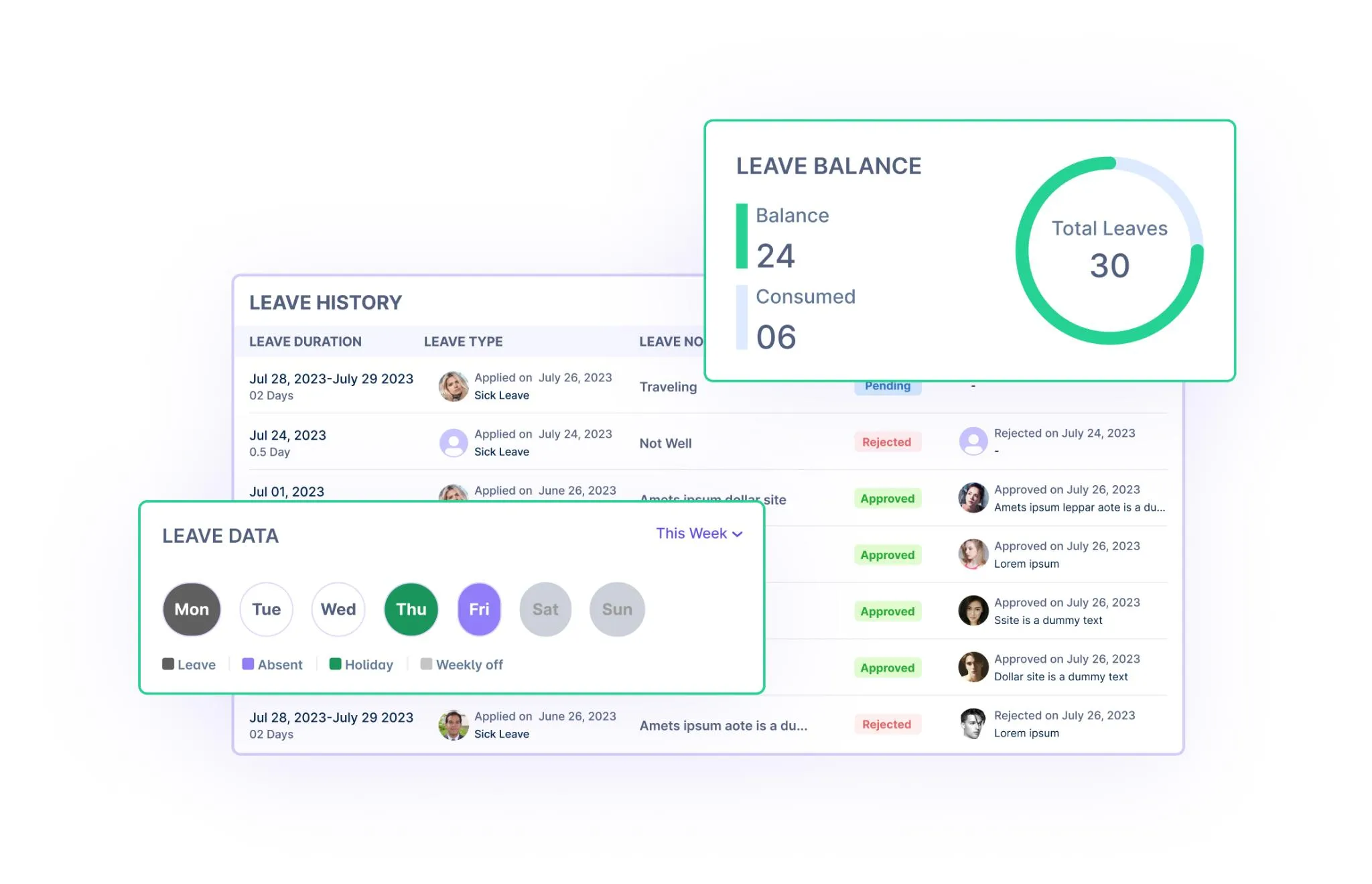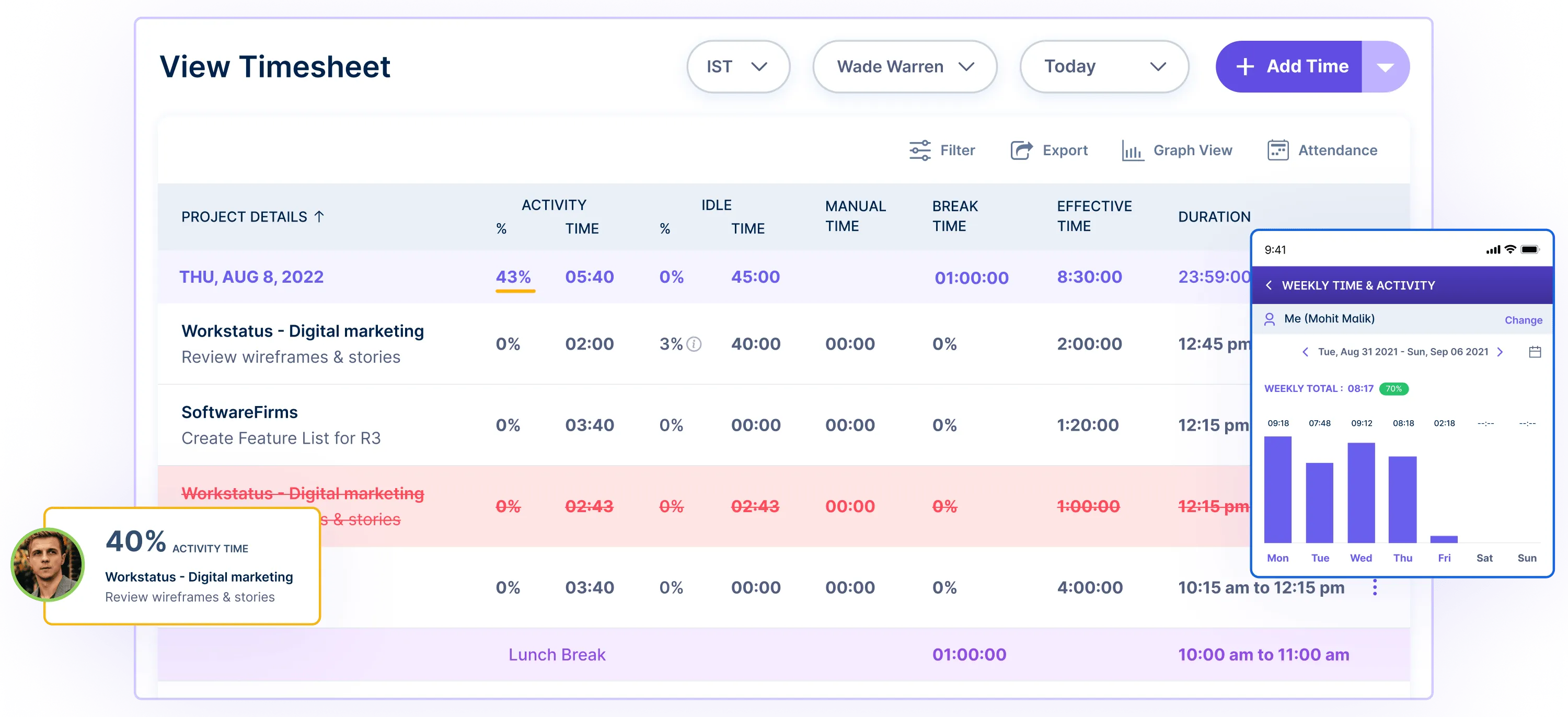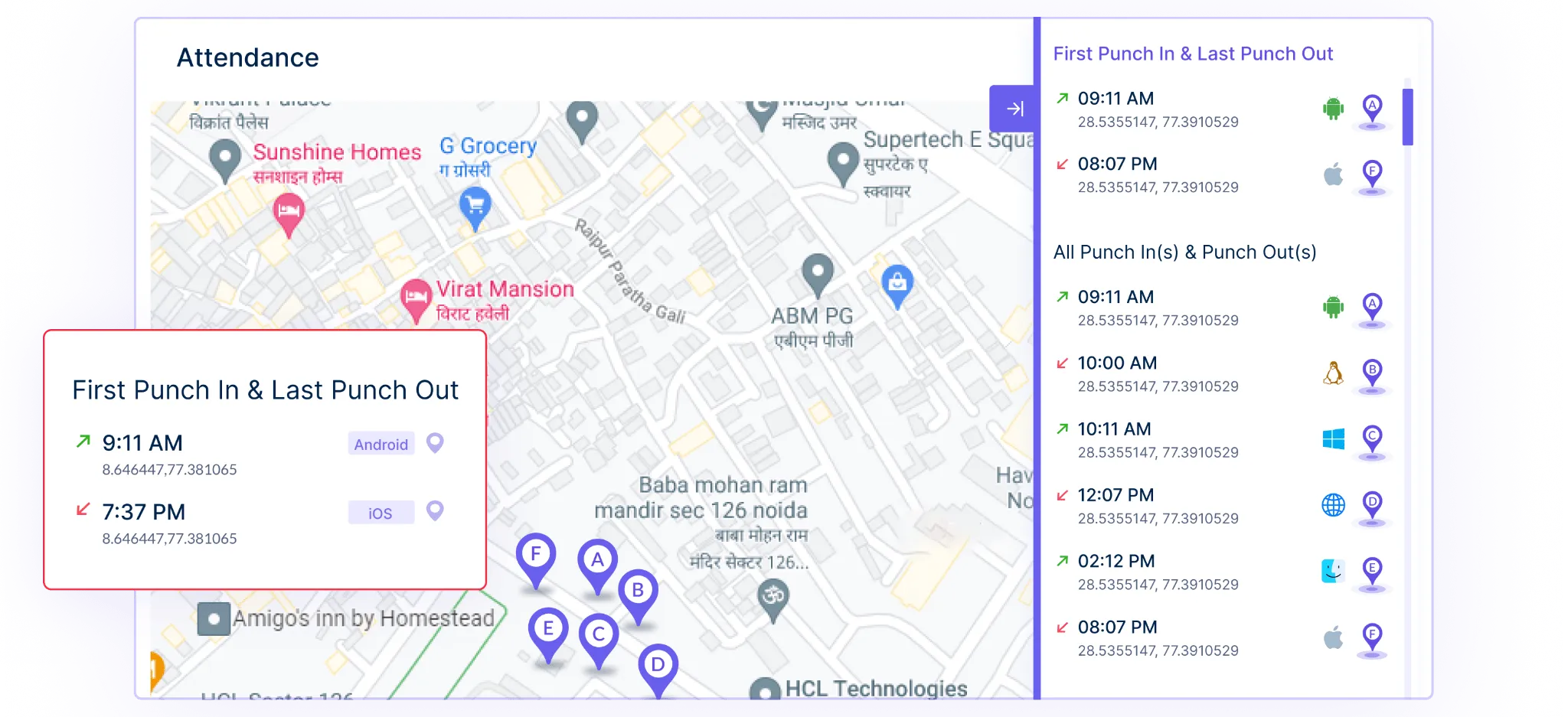Table of Contents
Introduction
Employees missing work often can be a big problem for businesses. It leads to low productivity and higher costs.
When employees are frequently absent, it breaks the workflow and adds extra work for their team members.
Did You Know?
Employee absenteeism costs US companies an estimated $19 billion annually in lost productivity.
Absenteeism not only affects a company’s profits but can also result in the following:
- Low motivation
- Unhappy work environment
- Poor employee engagement
Dealing with absenteeism issues early can help create a more engaged and reliable workforce, ultimately adding to the organization’s success.
This blog post will share eight practical tips for managers and HR professionals to properly address employees’ missing workplace work.
Let’s dive in.
How Can Absenteeism Impact Your Business?
When employees don’t come without prior information, it’s called absenteeism. Even if it’s just one person missing, it can start causing problems.
With one person absent, their workload falls on others. This can lead to:
- More stress and burnout for the remaining staff
- Dropping productivity levels
- Less work getting done in the same amount of time
As a result, projects may miss important deadlines. Customers could get frustrated by slower service or responses. All of this can directly impact:
- A company’s revenues
- Its reputation
Excessive absenteeism can even threaten a business’s survival. That’s why companies need strategies to monitor and reduce absenteeism.
Workstatus lets companies accurately track employee attendance and time worked. With automated attendance management, issues with excessive absenteeism can be flagged early.

Workstatus also provides data and reporting to analyze attendance patterns over time.
Start maintaining healthier attendance rates with Workstatus.
Top 8 Ways to Reduce Employee Absenteeism in Your Workforce
Here are some top ways to decrease absenteeism in your workforce:
1. Measure Absence
 You can take a proactive approach by measuring employee absenteeism and taking steps to get employees back on track. This can include setting up an email or text reminder system, offering behavioral coaching, or calling employees who miss work.
You can take a proactive approach by measuring employee absenteeism and taking steps to get employees back on track. This can include setting up an email or text reminder system, offering behavioral coaching, or calling employees who miss work.
Keep track of every absence and evaluate it. You can also conduct brief surveys with your employees as they return from sick leave to determine whether they’re getting better, what their living conditions are like, or if they have any financial struggles, etc., all of which may help you reach out with appropriate assistance.
And finally, you might want to consider expanding your employee benefits package: a higher salary for full-time workers that comes with healthcare benefits might be more attractive.
While you’re tracking absences, don’t forget about your full-time employees. Try to understand why they’re absent and how you can reduce their absences.
For example, you may be able to make them more comfortable with paid leave by giving them extra days off or flexible hours. You could also see if your employee assistance program or insurance provider has resources for what troubles them so that you can provide additional support for issues like childcare, substance abuse, domestic violence, and chronic illnesses—all of which may contribute toward employee absenteeism.
2. Follow Appropriate Procedures
 When you’re trying to combat employee absenteeism, start by following all appropriate internal procedures.
When you’re trying to combat employee absenteeism, start by following all appropriate internal procedures.
Let employees know ahead of time what types of absences will be considered unexcused and what they can do if they have a valid reason for an absence.
What constitutes a valid excuse?
It varies but can include anything from serious illnesses or family emergencies to mandatory training sessions. When devising your absenteeism policy, consult with your human resources department about how frequently and for how long employees are allowed to take off work.
When you have an absenteeism policy, follow it consistently. Don’t make exceptions for certain employees, and don’t be tempted to look away when employees come in late or take too much time off.
3. Offer Flexible Scheduling

Letting employees adjust their schedules can really help reduce missed workdays. Some may need to start or end earlier or later.
Others may want longer days but an extra day off.
When you give employees control over their hours, they are less likely to miss work for appointments or personal needs. They can make their schedule fit their life.
Flexible schedules also promote better work-life balance and reduce stress. This can improve employees’ well-being and work output.
Even small amounts of scheduling flexibility can make a big difference.
Employees will appreciate your understanding, and you’ll likely see fewer absences.
Learn More: How Workstatus Can Help You In Flextime Management?
4. Educate Managers on How to Deal with Absences
 The best way to combat absenteeism is often a combination of employee education and manager support. If possible, train your managers on how to deal with individuals who may have attendance issues. This can be helpful for both parties.
The best way to combat absenteeism is often a combination of employee education and manager support. If possible, train your managers on how to deal with individuals who may have attendance issues. This can be helpful for both parties.
Meet with each employee’s manager and explain their job duties and expectations surrounding attendance. Including your company’s attendance policy will ensure everyone understands what steps they should take if employees begin having problems with their schedules.
To make it easier on your managers, consider creating an individualized absence-tracking spreadsheet or automated reminder tool that notifies them when certain employees will be out of the office. These simple steps can help minimize frustration and ensure everyone stays focused on their job.
5. Use Absence Management Tools

Using absence management tools to track when employees miss work can help. These tools let managers see where problems happen.
They also help the human resources (HR) team understand why employees miss work. These tools make it easier for managers and employees by showing attendance records on computers or phones.
This way, they can spot patterns they might have missed before. The result is
- Less missed workdays
- Higher work output
- More employee engagement
However, using these tools should not replace talking to employees in person about their performance. Instead, the tools should help make those talks better and lead to more positive changes.
Workstatus is one such employee attendance management tool that helps you keep track of staff attendance throughout the organization. It can assist you in the following ways:
- Keep HR informed about authorized absences
- You can rack and manage leaves, absences, and vacations from single dashboard

- Its online timesheet tracker enables supervisors to track late arrivals and unexpected absences

- Track the attendance of remote employees with GPS tracking

Attendance reports show which team members were absent, present, late, or half-present on any date or a specified date range.

This will help you keep track of an employee’s attendance and address unplanned absences if they become a pattern.
Do you find it challenging to manage your time?
Workstatus simply boosts your team’s productivity. Sign up now—it’s totally free!
You can also start a free trial or book a demo
6. Reward Employees Who Have Good Attendance

The idea of improving employee attendance may sound straightforward enough, but if you want to take a more direct approach, you should begin by tracking and rewarding those employees who are always on time.
If a handful of your staff consistently shows up early or stays late, give them some kind of reward, be it extra days off or money in their paycheck.
You should also develop ways to encourage your employees, like considering offering shift swaps or other opportunities for additional days off if they meet specific attendance goals.
Another way you can improve employee attendance is by giving employees more opportunities for choice. If they are allowed to pick their shifts, you will likely see an improvement in both their morale and their overall productivity.
This will also help them get a better idea of what hours are best for them instead of being told when they have to work.
7. Update Company Policies Regularly

Look at your company’s policy on missed workdays regularly. Old or unclear policies can confuse employees.
Clearly explain the difference between “excused” and “unexcused” absences.
An “excused” absence, like being sick or having a family emergency. And “unexcused” absence, like missing work without a good reason.
Employees should know what will happen if they take too many unplanned leaves. They may receive a warning or disciplinary action.
Reviewing and updating these rules helps prevent misunderstandings.
Clear and current rules make it easier for everyone to follow the proper procedures for missed workdays.
This can help reduce excessive absenteeism in your workforce.
8. Conduct a Regular Program of Staff Development
If the goal of your organization is to improve employee attendance, one of your priorities should be to ensure that you have a regular staff development program in place.
Staff development programs help ensure that employees can keep up with training and other requirements as they change their roles or take on new projects within their jobs. Employees who feel supported by their employers and given opportunities for professional growth will be much less likely to call in sick or leave early.
Make sure that an employee’s level of training doesn’t just match their needs but exceeds them so they can exceed expectations in their job too.
Employees who feel like they’re not growing professionally tend to look elsewhere for career paths that better suit them.
Closing Thoughts
Putting these strategies in place may seem like a lot of work, but the benefits for your business are clear. By reducing absenteeism, you can improve how much work gets done and lower costs from lost time.
Even just a few of these strategies can help your employees be more productive and less likely to miss work.
Reducing employee’s missing work may seem hard, but it’s not.
You can reduce unplanned absences through tools, better communication channels, and a practical attendance policy.
However, each employee may need different arrangements.
That’s why, to help your employees meet their work goals, you must ensure your policy is flexible enough to accommodate and assist everyone.
Try Workstatus to get an unmatched experience tracking employee attendance for yourself.











